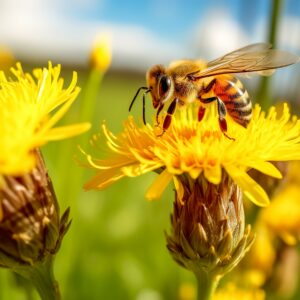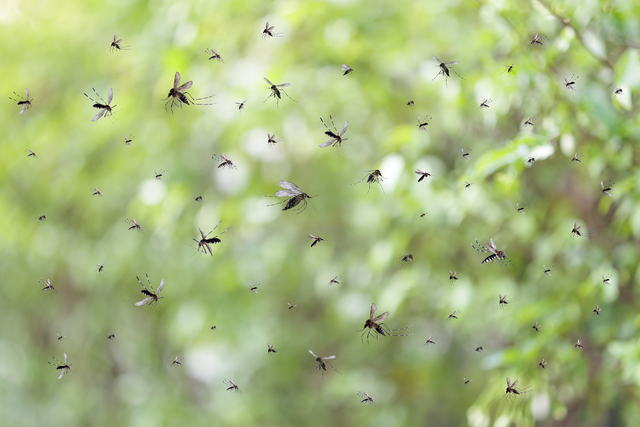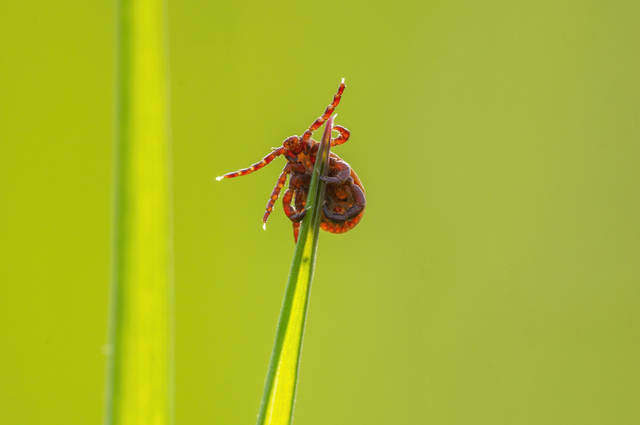- About
- Programs
- After School Classes
- All-School Assemblies
- The BE KIND Business
- The BE KIND Community Education Center
- The BE KIND SCHOOL
- BE KIND on the MOVE
- Classroom Resources
- #CyberSkills
- Family Engagement
- Fitness Programs
- Gardens
- Grace’s Group
- Health & Wellness
- Summer Programs
- Teacher Training
- Wellness Wednesday
- Athletes for Arizona
- Events
- Get Involved
- Donate
The Buzz on Bug Bites
- Home
- Wellness Wednesday
- Disease Prevention
- The Buzz on Bug Bites
Bugging Out
Fun and Friendly Tips to Keep those Pesky Bug Bites Away

Tips for Prevention & Treatment
Happy Wellness Wednesday! Today we will buzz around the world of bug bite prevention and treatments. Whether it’s those pesky mosquitoes, troublesome ticks, or buzzing bees, we’ve got you covered with tips and tricks to keep those bites at bay. In this article, we’ll explore fun and effective methods to prevent and treat bug bites from a variety of critters, including mosquitos, bees, wasps, scorpions, spiders, and snakes. So, grab your bug spray, put on your adventure hat, and let’s dive into the world of bug bite prevention and treatment with a smile on our faces!
The Battle Begins: Bug Bite Prevention 101
Arm yourself with the most effective bug bite prevention techniques as told by some of the leading Pest Control Firms in the States!
- Embrace Citrus Power
Did you know that bugs have a strong aversion to citrus scents? Make your own natural bug repellent by combining citrus essential oils with water and spritzing it on your skin. Not only will you repel bugs, but you’ll also smell fresh and citrusy! - Garlic, the Vampire Repellent of Bugs
While garlic may repel vampires in folklore, it turns out bugs aren’t too fond of it either! Incorporate garlic into your meals or rub a clove on your skin to ward off those pesky critters. Just make sure you’re not attending a first date! - Dress Up in Bug-Proof Fashion
Bugs can be quite fashion-conscious, but they have a few pet peeves when it comes to clothing. Opt for light-colored attire that covers your skin, as bugs are attracted to dark colors. Tuck your pants into your socks and wear long sleeves to minimize exposed areas. Who said fashion and bug bite prevention couldn’t go hand in hand? - Spice Up Your Life with Bug-Repelling Herbs
Did you know that certain herbs are excellent repellents? Plant lavender, lemongrass, mint, or rosemary around your outdoor living spaces to naturally ward off bugs. Plus, you’ll have a fragrant and useful herb garden at your fingertips! - Use the Power of Peppermint
Bugs despise the invigorating scent of peppermint. Create your own bug spray by mixing peppermint essential oil with water and spritz it around your home or on your skin. Not only will you repel bugs, but you’ll also enjoy a refreshing aroma. - Employ the Breeze Defense
Bugs are not fans of a good breeze. Use fans or create airflow in outdoor areas to keep bugs at bay. They’ll struggle to navigate through the wind, leaving you free to enjoy your bug-free space. - Take Cover under Mosquito Netting
Planning a camping trip or picnic in bug-prone areas? Carry mosquito netting with you. Create a bug-free sanctuary by setting it up over picnic tables or around your sleeping area. It’s like having your own little bug-free bubble! - Avoid Perfumed Products
Bugs can be drawn to perfumed lotions, soaps, and other scented products. Opt for unscented or lightly scented alternatives to minimize any unwanted buzzing guests. - Be Mindful of Still Water
Mosquitoes love still water as breeding grounds. Regularly empty any stagnant water sources in your surroundings, such as flowerpots, birdbaths, or buckets. By eliminating their preferred breeding spots, you’ll reduce the mosquito population around your home. - Stay Away from Bug Rush Hour
Bugs tend to be most active during dawn and dusk. If possible, schedule your outdoor activities for other times of the day to avoid the peak bug hours. Your skin will thank you!
Bees and Wasps: Unveiling the Sting Operation
Did you know that three-fourths of the world’s flowering plants and about 35 percent of the world’s food crops depend on animal pollinators? According to the USDA, some scientists estimate that one out of every three bites of food we eat exists because of animal pollinators like bees. Here are some tips to avoid getting stung while being kind and respectful to our pollinating friends.
Before we dive deeper, let’s differentiate between bees and wasps. Bees are typically rounder and fuzzier, while wasps are slenderer with smooth bodies. Understanding their physical characteristics can help you identify these buzzing insects and determine the appropriate response. According to Medical News Today, there are things you can do to help prevent you from getting stung.
- Respect the Buzz: Understanding Why They Sting
Bees and wasps typically sting as a defense mechanism when they feel threatened. They are protective of their nests and territory and may perceive certain movements or vibrations as a danger. Respect their space and remember that they sting to protect themselves, not to target humans unprovoked. - Bee Careful When You Eat Sweets
Bees are attracted to sweet scents, so be mindful of their presence when enjoying outdoor picnics or sugary drinks. Keep food and drinks covered, use containers with tight lids, and dispose of trash properly to minimize their interest. A peaceful coexistence is possible! - Stay Calm and Avoid Swatting: Wasp Encounter Etiquette
If you encounter a wasp, it’s crucial to remain calm and avoid swatting or making sudden movements. Quick and aggressive actions can provoke defensive stinging behavior. Stay still, and the wasp is more likely to move along without incident. - Dress for Success: Choosing Wasp-Repelling Clothing
Wasps are known to be attracted to floral prints and bright colors. When spending time in areas with high wasp activity, opt for lighter-colored clothing, preferably with solid patterns. This simple choice can reduce their attraction to you. - Mind the Nests: Recognizing and Avoiding Bee and Wasp Colonies
Bees and wasps establish nests in various locations, such as trees, attics, or underground. Educate yourself on common nesting spots and be cautious in those areas. Avoid sudden movements, loud noises, or disturbing their nests to prevent provoking defensive stinging behavior. - Seek Professional Help: Nest Removal and Management
If you have a bee or wasp nest on your property that poses a threat, it’s best to contact a professional pest control service for safe removal. Attempting to remove nests yourself can be dangerous and increase the risk of stings.
Mosquito Mayhem: Outsmarting the Mosquitos
Do you know why mosquitoes are attracted to certain people? What are some unconventional remedies to ease the discomfort? The EPA lists some tricks to prevent mosquito bites and minimize the itching aftermath.

- Remove Standing Water: The Mosquitoes’ Breeding Ground
Mosquitoes lay their eggs in stagnant water, so eliminating any standing water sources around your home is essential. Regularly empty flowerpots, buckets, and clear clogged gutters to deny mosquitoes a breeding haven. - Dress to Repel: Mosquito-Proof Clothing Choices
Opt for loose-fitting, long-sleeved shirts and pants when venturing into mosquito-infested areas. Additionally, choose light-colored clothing, as mosquitoes are less attracted to lighter shades. - Fragrant Repellents: The Power of Essential Oils
Harness the aromatic potency of essential oils to repel mosquitoes. Lemon eucalyptus, lavender, citronella, and peppermint are natural repellents that can be diluted with a carrier oil and applied to exposed skin. Not only will you smell delightful, but you’ll also keep those pesky mosquitoes at bay. - Timing is Everything: Avoid Mosquito Prime Time
Mosquitoes are most active during dawn and dusk. If possible, plan outdoor activities accordingly to reduce your exposure during their peak feeding hours. - Unraveling the Attraction: Surprising Factors that Lure Mosquitoes
Mosquitos have a preference for certain individuals, and several factors contribute to their attraction. Body heat, lactic acid, carbon dioxide, and even certain blood types can make some people more attractive to these persistent pests. While you can’t change your blood type, being mindful of these factors can help you take extra precautions. - Itching for Relief: Unconventional Remedies to Soothe the Itch
When you inevitably succumb to a mosquito bite, there are unconventional remedies to ease the discomfort. Apply a cold spoon or make a paste with baking soda and water to help alleviate itching. Sometimes the oddest remedies provide the most relief. - Store-Bought Repellents: Protect Yourself with Convenience
Don’t underestimate the effectiveness of store-bought mosquito repellents. Always look at the active ingredients, educator yourself about the product, and follow the instructions carefully for safe and effective use.
Tick Tackles: Navigating the World of Ticks and Tick Bites
Today we’ll uncover the world of ticks and the risks they pose according to Harvard University. Check out these unusual methods to prevent ticks from making a meal out of you and the most entertaining ways to remove them.

- Tick Awareness: Knowing Your Adversary
Understanding ticks is key to avoiding them. Learn about the common types of ticks in your area and familiarize yourself with their appearance, habitats, and peak activity times. This knowledge will help you be more vigilant in tick-prone environments. - Tick Removal 101: Tweezers
If you find a tick latched onto your skin, it’s important to remove it promptly and properly. Use fine-tipped tweezers to grasp the tick close to the skin’s surface and pull upward with steady, even pressure. - The Tickle Method: Tick Removal with a Feather’s Touch
For a lighthearted approach, some people swear by the “tickle method.” Gently tickle the tick’s back with a feather or a blade of grass. The tick’s response is to withdraw, making it easier to remove. It’s a playful technique that might just do the tick! - Seeking Professional Help: When in Doubt, Call the Experts
If you’re unsure about tick removal or suspect you may have been bitten by a disease-carrying tick, it’s best to seek professional medical advice. Healthcare professionals can guide you on proper removal techniques and provide appropriate care and monitoring.
Surviving Spider Bites, Scorpion Stings, and Snake Encounters
Learn how to identify dangerous species, prevent bites, and when to seek professional medical help from Texas Parks and Wildlife!
- Educate Yourself: Identifying Dangerous Species
Familiarize yourself with the dangerous species prevalent in your area. Learn to recognize their distinctive characteristics, such as specific colors, patterns, or body shapes. Understanding the differences will help you distinguish them from harmless creatures. - Mindful Encounters: Prevention is the Best Defense
Avoid handling or provoking potentially dangerous species. Respect their natural habitats and keep a safe distance when encountering them in the wild. Wearing appropriate protective clothing and shoes can further reduce the risk of bites. - Know Your Surroundings: Researching High-Risk Areas
Prioritize research before venturing into unfamiliar or high-risk areas. Learn about the local wildlife and their behaviors. Understanding which species are more likely to pose a threat will allow you to take the necessary precautions and adjust your activities accordingly. - Stay Calm: Reacting to Encounters
In the event of an encounter with a potentially dangerous species, remain calm and avoid sudden movements. Most creatures will only attack if they feel threatened. Slowly and carefully retreat from the area without turning your back on the animal. - Seeking Professional Guidance: When in Doubt, Ask for Help
If you encounter a creature and are uncertain about its identity or potential danger, seek guidance from local wildlife authorities, park rangers, or professional wildlife services. They have the expertise to assist you and can provide valuable advice specific to your region. - Bites and Stings: Knowing When to Seek Medical Help
If you are bitten or stung by a potentially dangerous creature, it’s essential to assess the situation promptly. While minor bites or stings may be treatable with basic first aid, certain situations require immediate medical attention. Call 911 or seek professional help if you experience severe pain, swelling, difficulty breathing, allergic reactions, or any other concerning symptoms. If it’s not a life-threatening emergency you can call poison control at 1-800-222-1222. - Be Prepared: Knowledge and First Aid Supplies
Equip yourself with basic first aid knowledge and supplies suitable for outdoor adventures. Carry a well-stocked first aid kit, including items like antihistamines, bandages, and a digital thermometer. This preparedness can make a significant difference in handling potential emergencies.
As we conclude our journey into the wild world of bug bite prevention and treatment, armed with newfound knowledge, let’s embrace the wonder and peculiarities of these tiny creatures. Remember, prevention is key, but should you find yourself on the receiving end of a bug bite, don’t worry! With our entertaining remedies and fun facts, you’ll be equipped to handle any itchy situation with a sense of humor. Stay curious, stay protected, and keep exploring!
Published on August 23, 2023
Questions? Comments? Want to contribute to the Wellness Wednesday Blog?
Send your ideas to info@bkpp.org.

Learn More about The Be Kind People Project®
- Programs
- After School Classes
- All-School Assemblies
- The BE KIND Academy
- The BE KIND Business
- The Be Kind Break
- The BE KIND School
- The BE KIND on the MOVE
- #CyberSkills
- Family Engagement
- Fitness Programs
- Gardens
- Grace’s Group
- Health & Wellness
- Summer Programs
- Teacher Training
- Wellness Wednesday
- Athletes for Arizona
Copyright © The Be Kind People Project | Privacy Policy

